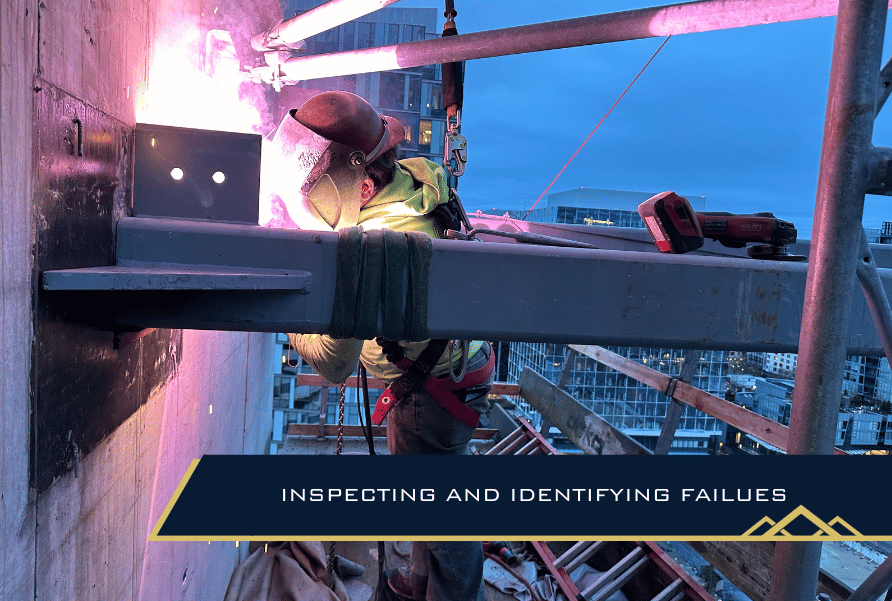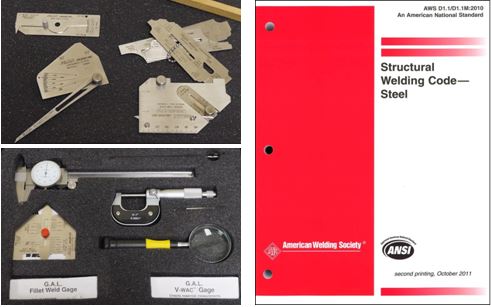A Comprehensive Overview to Welding Examination: Recognizing Specifications, Techniques, and Ideal Practices for Quality Control
Welding examination plays a pivotal duty in guaranteeing the structural integrity and safety of welded components, requiring a complete understanding of market requirements such as those established by AWS and ASME. As we check out these crucial elements, it becomes obvious that the effects of welding evaluation expand much beyond conformity, welcoming a better examination of how these procedures shape market criteria and methods.
Value of Welding Examination
Welding inspection plays a vital role in guaranteeing the integrity and security of welded frameworks. It is a crucial process that verifies that welds adhere to predefined specs, which is vital in different markets, including construction, automotive, and aerospace. By conducting extensive inspections, possible flaws such as fractures, insufficient combination, and porosity can be determined early, avoiding tragic failures that could cause crashes or expensive fixings.
The importance of welding inspection extends beyond mere conformity with guidelines; it additionally cultivates count on with stakeholders. Customers and regulatory bodies anticipate assurance that the frameworks they count on are developed to endure operational stress and anxieties. Additionally, effective welding inspection practices add to long-term longevity and efficiency of the frameworks, eventually leading to minimized upkeep prices.
Additionally, welding assessment advertises a culture of high quality within companies, urging adherence to best techniques and continuous enhancement. By integrating assessment procedures right into the welding process, business can boost their credibility and establish themselves as leaders in quality control. Finally, the significance of welding assessment exists in its capability to safeguard lives, make sure structural reliability, and maintain market standards, making it a crucial element of welding procedures.
Key Industry Criteria
Ensuring compliance with key market requirements is crucial for maintaining the high quality and safety of welded frameworks. Numerous organizations develop these requirements to advertise finest techniques in welding and inspection - Welding Inspection Gilbert Arizona. Among one of the most acknowledged are the American Welding Society (AWS) and the American Culture of Mechanical Engineers (ASME), which provide detailed standards and requirements for welding processes and examination requirements
AWS criteria, such as AWS D1.1 for architectural welding, outline demands for products, layout, and testing to ensure the stability of welds. Likewise, ASME codes, including ASME Section IX, govern the credentials of welders and welding procedures, making certain regular top quality in industrial applications. Internationally, the ISO 3834 common highlights quality requirements for fusion welding, giving a structure for organizations to demonstrate conformity with global best techniques.
Compliance with these criteria not only enhances the dependability of welded frameworks however additionally mitigates risks associated with architectural failings. Moreover, adherence to industry standards is commonly a requirement for regulative authorizations and can significantly affect job specifications. Eventually, understanding and executing these essential criteria are important for effective welding inspection and top quality assurance.
Evaluation Techniques Overview
Efficient welding evaluation counts on a variety of techniques made to examine the quality and stability of welds. These methods can be generally classified right into non-destructive and destructive testing (NDT) approaches. Non-destructive testing methods, which are commonly liked in the sector, enable the assessment of welds without jeopardizing the honesty of the material.

Amongst one of the most frequently used NDT strategies are aesthetic inspection, ultrasonic screening, radiographic screening, and magnetic fragment screening. Aesthetic evaluation is frequently the first step visite site in the analysis procedure, allowing assessors to identify surface area imperfections and evaluate weld bead profiles. Ultrasonic testing uses high-frequency acoustic waves to discover interior defects and determine the thickness of welds. Radiographic testing entails making use of X-ray or gamma-ray imaging to reveal internal defects, while magnetic particle testing works for discovering surface and near-surface stoppages in ferromagnetic materials.
Each strategy has its own advantages and restrictions, making it essential for inspectors to choose the most appropriate technique based on the specific demands of the job, the products entailed, and the criticality of the welds being evaluated. This careful selection makes certain comprehensive analyses and upholds safety and security and high quality requirements in welding operations.
Usual Issues and Their Effects
A comprehensive understanding of usual flaws in welds is important for preserving structural integrity and security in welded building and constructions. Welding defects can dramatically jeopardize the mechanical homes of the joint, bring about failings that can jeopardize both personnel and equipment.
Common defects consist of porosity, which materializes as little gas pockets trapped in the weld steel, damaging the total framework. Breaking is an additional prevalent problem, usually arising from fast cooling or inappropriate joint layout, causing tension focus that can lead to disastrous failings. Insufficient fusion occurs when the weld metal stops working to correctly bond with the base material, producing powerlessness that might bring about separation under tons.
Other remarkable defects consist of damaging, where the weld bead deteriorates the base steel, and slag additions, which can hinder the weld's strength. Each of these issues has particular ramifications; for example, porosity can decrease ductility, while cracking straight affects tensile strength. Determining and understanding these problems during examination is necessary for ensuring and carrying out rehabilitative procedures compliance with market standards, ultimately guarding the architectural integrity of bonded settings up.
Best Practices for Top Quality Guarantee
Implementing best techniques for top quality assurance in welding procedures is necessary for attaining optimum results and decreasing issues. One vital practice is the establishment of clear welding procedures that stick to industry requirements and specs. These procedures must consist of thorough guidelines pertaining to material selection, joint preparation, and welding methods to guarantee consistency and quality.
Normal training and certification of welding personnel are also essential. Skilled welders who recognize the value of quality control are most likely to generate audio welds. In addition, go applying a robust evaluation program, consisting of both aesthetic and non-destructive screening (NDT), can help recognize flaws early at the same time, enabling prompt rehabilitative activities.

Lastly, fostering a society of top quality within the organization encourages staff members to prioritize quality in their job. By adhering to these best practices, companies can enhance the integrity of their welding processes, eventually causing enhanced item quality and decreased costs connected with rework and repairs.

Conclusion
In final thought, welding inspection plays an important duty in ensuring the stability and safety of bonded frameworks. Adherence to crucial market standards, such as those established by AWS and ASME, is necessary for effective quality guarantee. Using different assessment techniques enables the recognition of typical problems, thus minimizing prospective threats. By applying finest methods, companies can boost dependability, decrease upkeep expenses, and cultivate count on amongst clients, ultimately contributing to successful welding operations - Welding Inspection Gilbert Arizona.
Furthermore, welding inspection advertises a society of high quality within organizations, encouraging adherence to ideal practices and constant enhancement. In conclusion, the significance of welding examination exists in its ability to secure lives, guarantee structural integrity, and maintain industry criteria, making it a vital aspect of welding procedures.
Amongst the most acknowledged are the American Welding Culture (AWS) and the American Culture of Mechanical Designers (ASME), which provide comprehensive standards and requirements for welding processes and examination standards.
Ultimately, understanding and applying these vital criteria are necessary for effective welding assessment and high quality guarantee.
Effective welding evaluation counts on a variety of methods made to assess the quality and stability of welds.